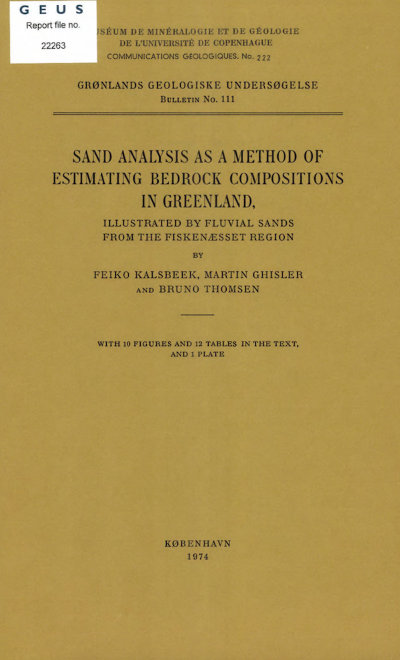Sand analysis as a method of estimating bedrock compositions in Greenland. Illustrated by fluvial sands from the Fiskenæsset region
DOI:
https://doi.org/10.34194/bullggu.v111.6652Abstract
Mineralogical and chemical composition, heavy and opaque mineral content and grain size distribution of the sands show that they mainly consist of locally derived material. Glacially transported material has little influence on the composition of the sands. By comparing sands of various grain sizes, it is shown that the sedimentary processes do not appreciably change the composition of the sands, except that biotite is largely winnowed out. Thus, the sands are suitable for a regional study of the composition of the country rocks and for prospecting. Estimates are made of the average mineralogical and chemical composition of the area and the abundance of the different rock types. The amount of hypersthene gives an impression of the metamorphic grade of the rocks, and the average chemical composition of the high-grade rocks in the northern part of the area is the same as that of the lower grade rocks in the southern part.
Downloads
Published
Issue
Section
License
This article is distributed under a CC-BY 4.0 licence, permitting free redistribution and reproduction for any purpose, even commercial, provided proper citation of the original work. Author(s) retain copyright over the article contents.


